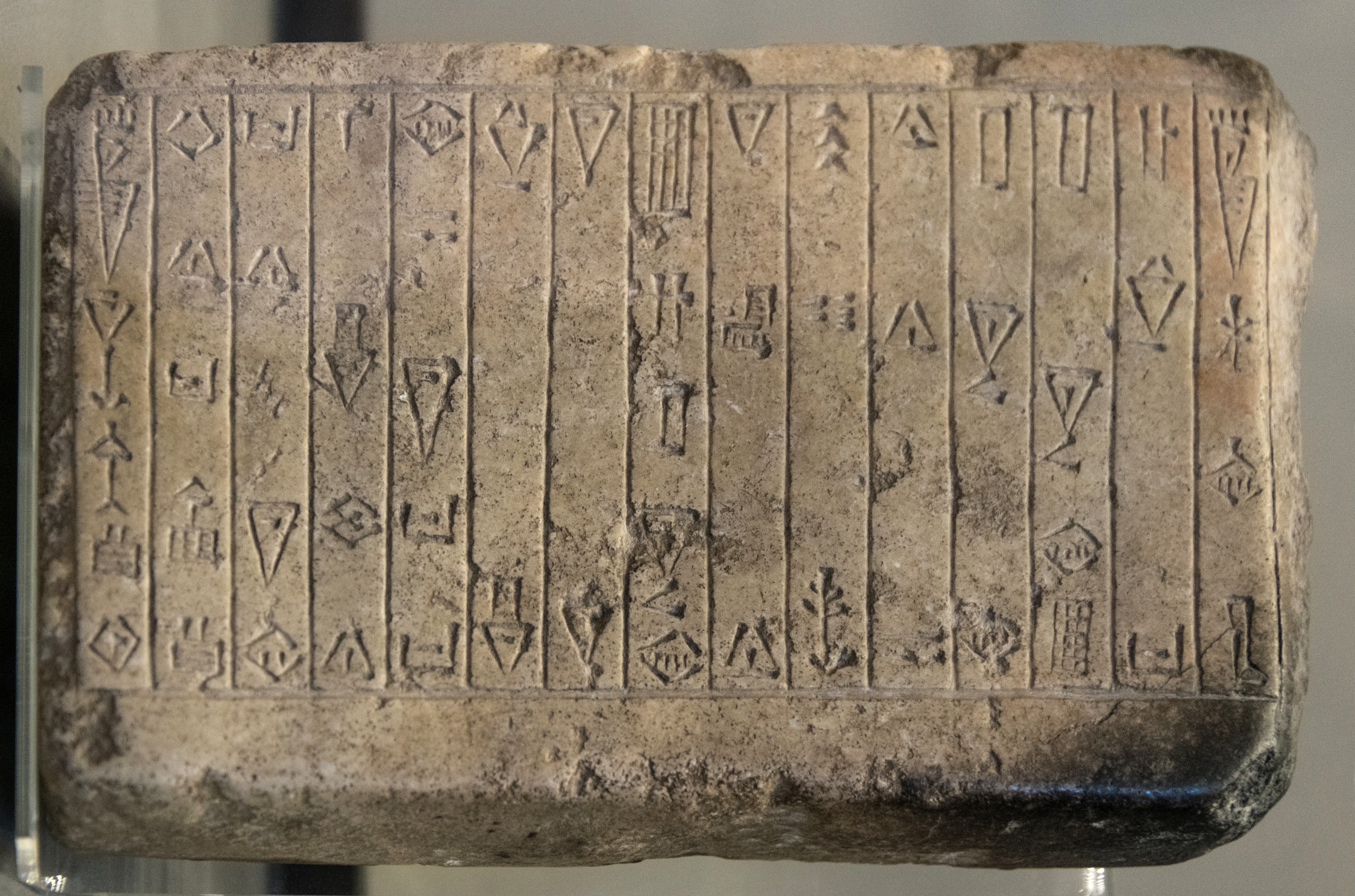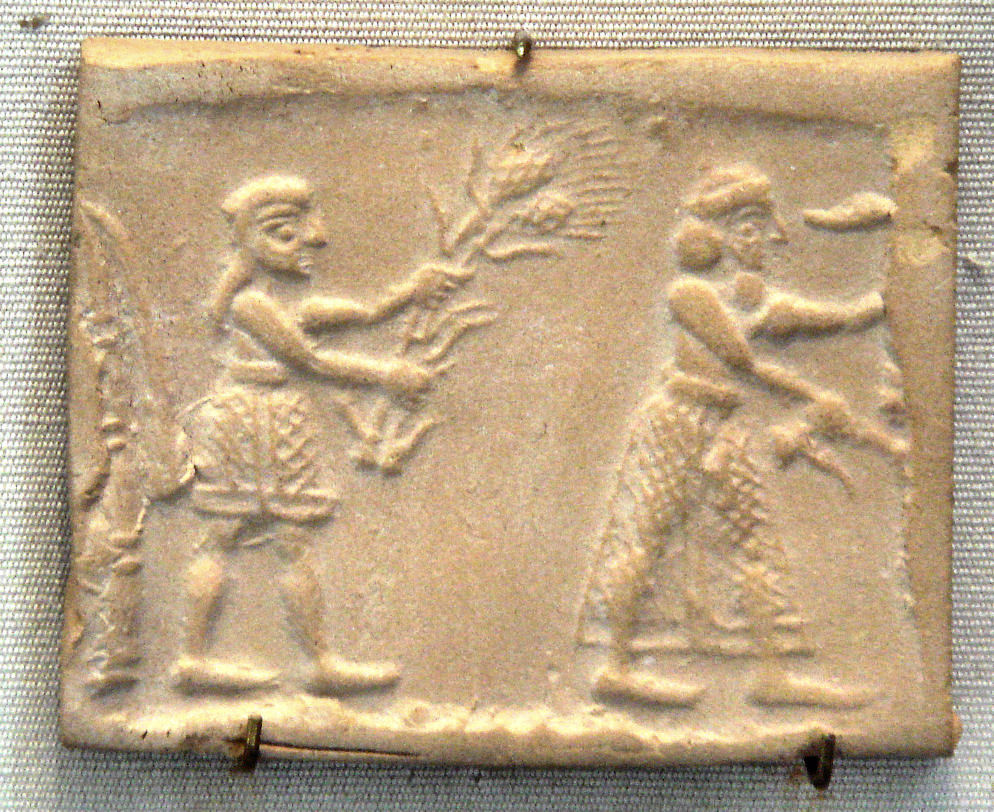|
Lugalannatum
Lugalannatum (, ''lu-gal-an-na-tum'') was a ruler (" patesi") of the city-state of Umma, circa 2130 BCE. Lugalannatum is known from a deposit tablet, now in the Louvre Museum, in which he mentions the rule of Si'um, king of the Gutians. The tablet was first published in 1911, and first revealed the existence of a Gutian dynasty of Sumer. The tablet is written in the Akkadian language following the influence of the former Akkadian Empire, and uses Sumerian cuneiform characters for their phonetical value. It reads: The name of the Temple, previously thought to be "Ê PA Temple", is now understood as being "Scepter Temple", and read ''E.GIDRU''. The text shows the allegiance of Lugalannatum, as simple Governor of Umma, towards the Gutian king of Sumer."From a text recently found at Jokha we also know that Lugal-annatum, patesi of Umma, Lugalannatum patesi of Umma, owed allegiance to Sium, King of Guti" There is also an inscription by Lugalannatum, dedicated to the life of Urgi ... [...More Info...] [...Related Items...] OR: [Wikipedia] [Google] [Baidu] |
Gutian Dynasty Of Sumer
The Gutian dynasty, also Kuti or Kutians ( Sumerian: , gu-ti-umKI) was a dynasty, originating among the Gutian people, that came to power in Mesopotamia ''c.'' 2199—2119 BC ( middle), or possibly ''c.'' 2135—2055 BC ( short), after displacing the Akkadian Empire. It ruled for roughly one century; however, some copies of the '' Sumerian King List'' (''SKL'') vary between 4 and 25 years. The end of the Gutian dynasty is marked by the accession of Ur-Nammu (founder of the Third Dynasty of Ur, which ''fl.'' ''c.'' 2112 BC ( middle) or 2055 BC ( short)). Originally thought to be a horde that swept in and brought down the Akkadian Empire, the Gutians are now known to have been in the area for at least a century by then. By the end of the Akkadian period, the Sumerian city of Adab was occupied by the Gutians, who made it their capital. History The Gutians were described as part of the horde that toppled the kingdom of Akkad (or Agade). It was a conglomeration of tribes that descend ... [...More Info...] [...Related Items...] OR: [Wikipedia] [Google] [Baidu] |
Gutians
The Guti () or Quti, also known by the derived exonyms Gutians or Guteans, were a nomadic people of West Asia, around the Zagros Mountains (Modern Iran) during ancient times. Their homeland was known as Gutium ( Sumerian: ,''Gu-tu-umki'' or ,''Gu-ti-umki''). Conflict between people from Gutium and the Akkadian Empire has been linked to the collapse of the empire, towards the end of the 3rd millennium BC. The Guti subsequently overran southern Mesopotamia and formed the Gutian dynasty of Sumer. The Sumerian king list suggests that the Guti ruled over Sumer for several generations following the fall of the Akkadian Empire. By the 1st millennium BC, usage of the name Gutium, by the peoples of lowland Mesopotamia, had expanded to include all of western Media, between the Zagros and the Tigris. Various tribes and places to the east and northeast were often referred to as ''Gutians'' or ''Gutium''. For example, Assyrian royal annals use the term Gutians in relation to populations kn ... [...More Info...] [...Related Items...] OR: [Wikipedia] [Google] [Baidu] |
Ensi (Sumerian)
Ensi (cuneiform: , "lord of the plowland"; Emesal dialect: ''umunsik''; akk, iššakkum, script=Latn, italic=yes) was a Sumerian title designating the ruler or prince of a city-state. Originally it may have designated an independent ruler, but in later periods the title presupposed subordinance to a lugal. For the Early Dynastic Period (about 2800–2350 BC), the meaning of the titles en, ensi and lugal cannot be differentiated clearly: see lugal, ensi and en for details. Ensi may have originally been a designation of the ruler restricted to Lagash and Umma. The ''ensi'' was considered a representative of the city-state's patron deity. In later periods, an ensi was normally seen as subordinate to a lugal. Nevertheless, even the powerful rulers of the Second Dynasty of Lagash (c. 2100 BC) such as Gudea were satisfied with the title ensi. During the Third Dynasty of Ur (about 2100–2000 BC) ensi referred to the provincial governors of the kingdom. These exercised great po ... [...More Info...] [...Related Items...] OR: [Wikipedia] [Google] [Baidu] |
Umma
Umma ( sux, ; in modern Dhi Qar Province in Iraq, formerly also called Gishban) was an ancient city in Sumer. There is some scholarly debate about the Sumerian and Akkadian names for this site. Traditionally, Umma was identified with Tell Jokha. More recently it has been suggested that it was located at Umm al-Aqarib, less than to its northwest or was even the name of both cities. One or both were the leading city of the Early Dynastic kingdom of Gišša, with the most recent excavators putting forth that Umm al-Aqarib was prominent in EDIII but Jokha rose to preeminence later. History In the early Sumerian text ''Inanna's descent to the netherworld'', Inanna dissuades demons from the netherworld from taking Shara, patron of Umma, who was living in squalor. They eventually take Dumuzid king of Uruk instead, who lived in palatial opulence. Best known for its long frontier conflict with Lagash, as reported circa 2400 BC by Entemena, the city reached its zenith c. 2350 BC ... [...More Info...] [...Related Items...] OR: [Wikipedia] [Google] [Baidu] |
Patesi
Ensi (cuneiform: , "lord of the plowland"; Emesal dialect: ''umunsik''; akk, iššakkum, script=Latn, italic=yes) was a Sumerian title designating the ruler or prince of a city-state. Originally it may have designated an independent ruler, but in later periods the title presupposed subordinance to a lugal. For the Early Dynastic Period (about 2800–2350 BC), the meaning of the titles en, ensi and lugal cannot be differentiated clearly: see lugal, ensi and en for details. Ensi may have originally been a designation of the ruler restricted to Lagash and Umma. The ''ensi'' was considered a representative of the city-state's patron deity. In later periods, an ensi was normally seen as subordinate to a lugal. Nevertheless, even the powerful rulers of the Second Dynasty of Lagash (c. 2100 BC) such as Gudea were satisfied with the title ensi. During the Third Dynasty of Ur (about 2100–2000 BC) ensi referred to the provincial governors of the kingdom. These exercised great po ... [...More Info...] [...Related Items...] OR: [Wikipedia] [Google] [Baidu] |
Si'um
Si'um, also Siium, or Sium (, ''si-u-um'', ''fl.'' late 3rd millennium BCE) was the 18th Gutian ruler of the Gutian Dynasty of Sumer mentioned on the "''Sumerian King List''" (''SKL''). According to the ''SKL'': Si'um was the successor of Yarlaganda. Sium was the last king of the Gutians before Tirigan (likewise according to the ''SKL'')."However, the last three Royal names of the Guti dynasty are again not Semitic. The last two among them are Sium and Tirikkan (Jacobsen, 1939)." in A tablet is known, dated to c. 2130 BCE, mentioning the allegiance of Lugalanatum prince of Umma to Sium, King of the Gutians."From a text recently found at Jokha we also know that Lugal-annatum, patesi of Umma, Lugalanatum patesi of Umma, owed allegiance to Sium, King of Guti" File:Si-u-um (name).jpg, Name "Si-u-um" on the tablet, and corresponding standard Sumero-Akkadian cuneiform File:Gutium_(name).jpg, Mention of the Gutian dynasty of Sumer in the tablet (last column: , gu-ti-umKI) See ... [...More Info...] [...Related Items...] OR: [Wikipedia] [Google] [Baidu] |
Floruit
''Floruit'' (; abbreviated fl. or occasionally flor.; from Latin for "they flourished") denotes a date or period during which a person was known to have been alive or active. In English, the unabbreviated word may also be used as a noun indicating the time when someone flourished. Etymology and use la, flōruit is the third-person singular perfect active indicative of the Latin verb ', ' "to bloom, flower, or flourish", from the noun ', ', "flower". Broadly, the term is employed in reference to the peak of activity for a person or movement. More specifically, it often is used in genealogy and historical writing when a person's birth or death dates are unknown, but some other evidence exists that indicates when they were alive. For example, if there are wills attested by John Jones in 1204, and 1229, and a record of his marriage in 1197, a record concerning him might be written as "John Jones (fl. 1197–1229)". The term is often used in art history when dating the career ... [...More Info...] [...Related Items...] OR: [Wikipedia] [Google] [Baidu] |
Louvre Museum
The Louvre ( ), or the Louvre Museum ( ), is the world's most-visited museum, and an historic landmark in Paris, France. It is the home of some of the best-known works of art, including the ''Mona Lisa'' and the ''Venus de Milo''. A central landmark of the city, it is located on the Right Bank of the Seine in the city's 1st arrondissement (district or ward). At any given point in time, approximately 38,000 objects from prehistory to the 21st century are being exhibited over an area of 72,735 square meters (782,910 square feet). Attendance in 2021 was 2.8 million due to the COVID-19 pandemic, up five percent from 2020, but far below pre-COVID attendance. Nonetheless, the Louvre still topped the list of most-visited art museums in the world in 2021."The Art Newspaper", 30 March 2021. The museum is housed in the Louvre Palace, originally built in the late 12th to 13th century under Philip II. Remnants of the Medieval Louvre fortress are visible in the basement ... [...More Info...] [...Related Items...] OR: [Wikipedia] [Google] [Baidu] |
Akkadian Language
Akkadian (, Akkadian: )John Huehnergard & Christopher Woods, "Akkadian and Eblaite", ''The Cambridge Encyclopedia of the World's Ancient Languages''. Ed. Roger D. Woodard (2004, Cambridge) Pages 218-280 is an extinct East Semitic language that was spoken in ancient Mesopotamia ( Akkad, Assyria, Isin, Larsa and Babylonia) from the third millennium BC until its gradual replacement by Akkadian-influenced Old Aramaic among Mesopotamians by the 8th century BC. It is the earliest documented Semitic language. It used the cuneiform script, which was originally used to write the unrelated, and also extinct, Sumerian (which is a language isolate). Akkadian is named after the city of Akkad, a major centre of Mesopotamian civilization during the Akkadian Empire (c. 2334–2154 BC). The mutual influence between Sumerian and Akkadian had led scholars to describe the languages as a '' Sprachbund''. Akkadian proper names were first attested in Sumerian texts from around the mid 3rd- ... [...More Info...] [...Related Items...] OR: [Wikipedia] [Google] [Baidu] |






